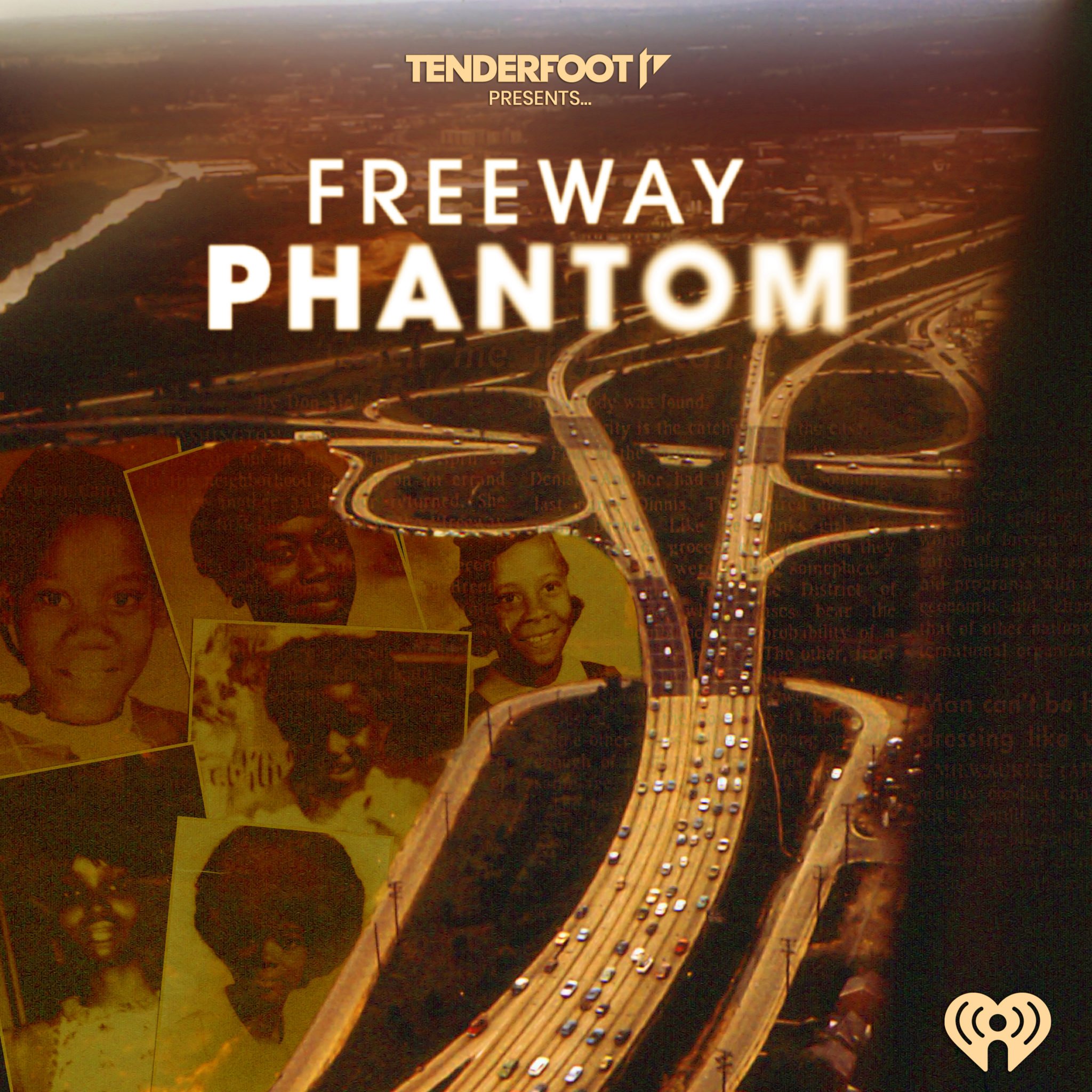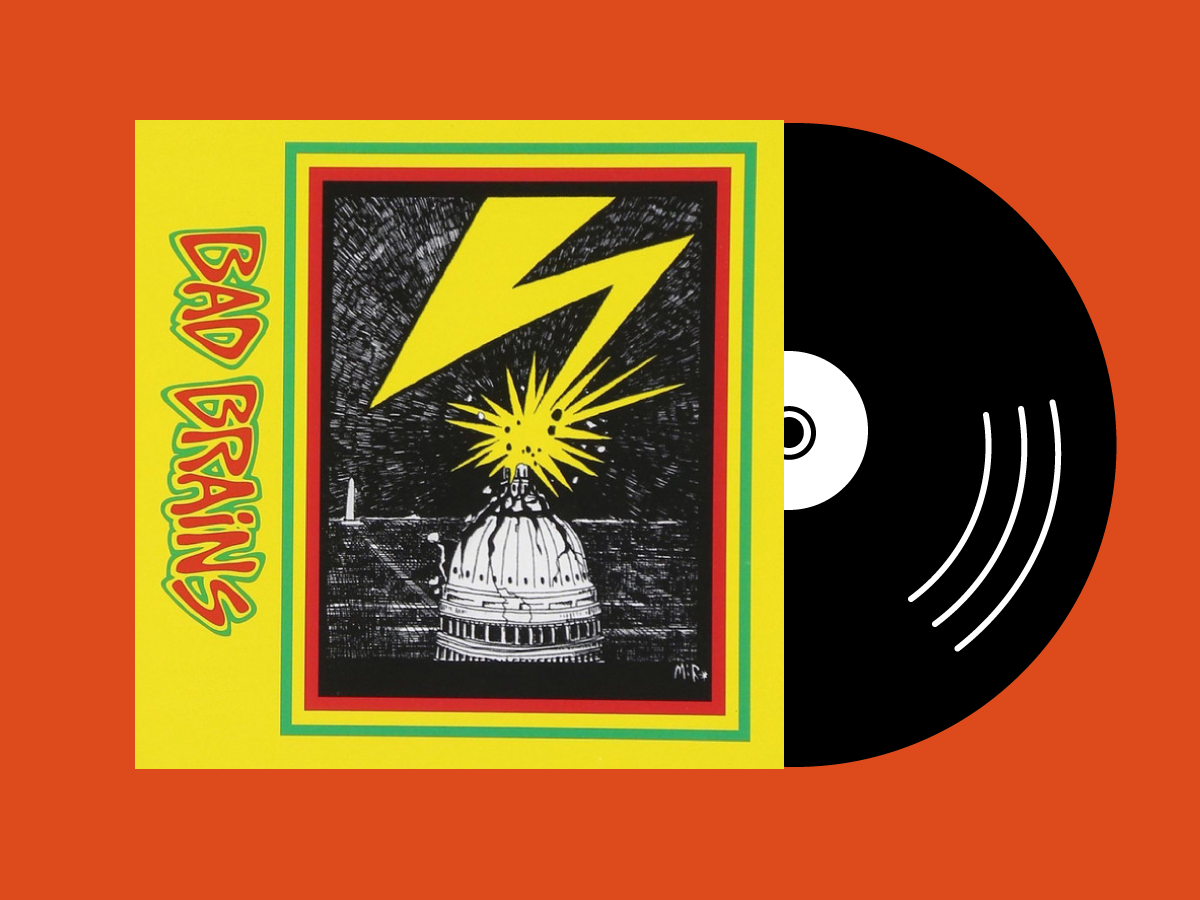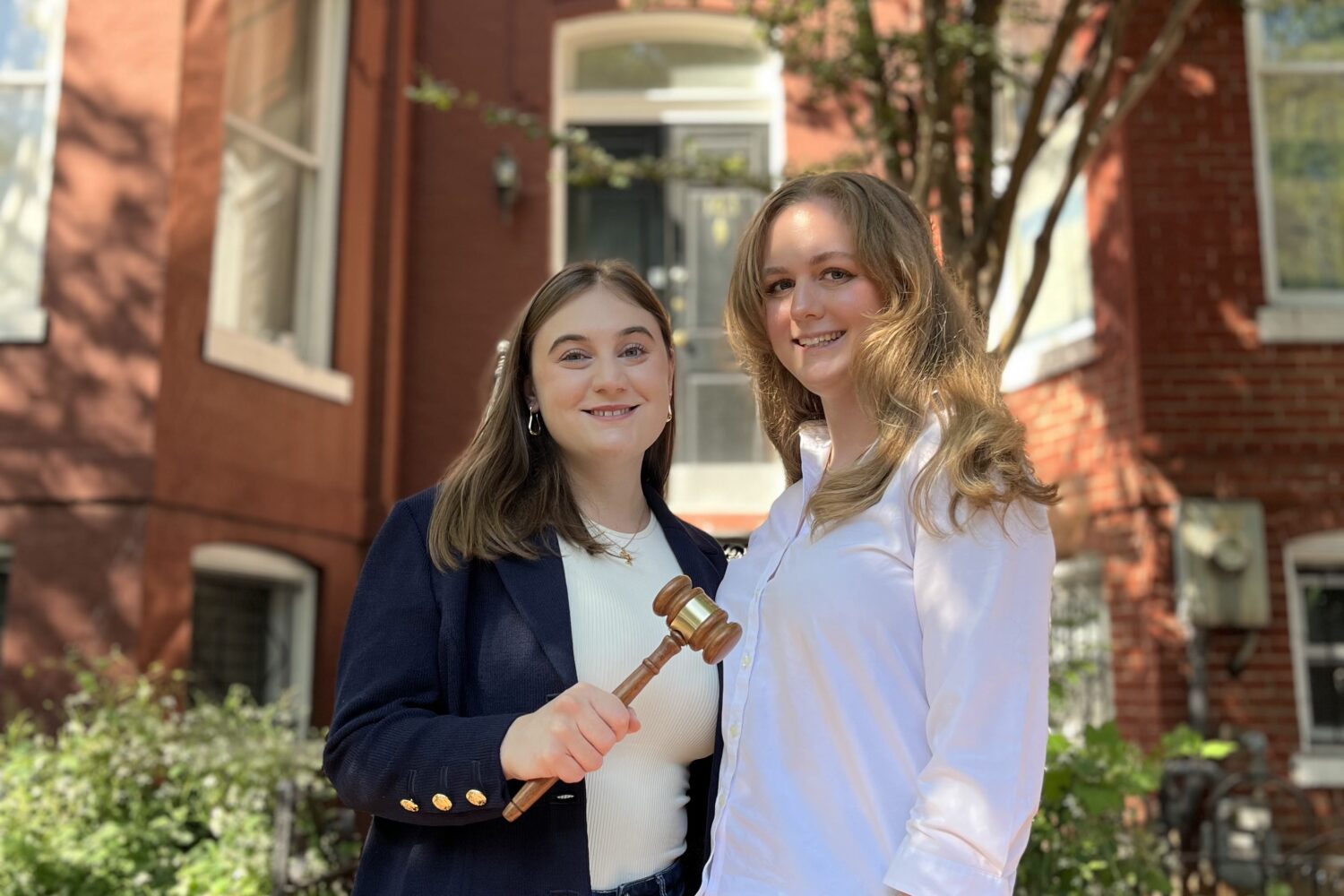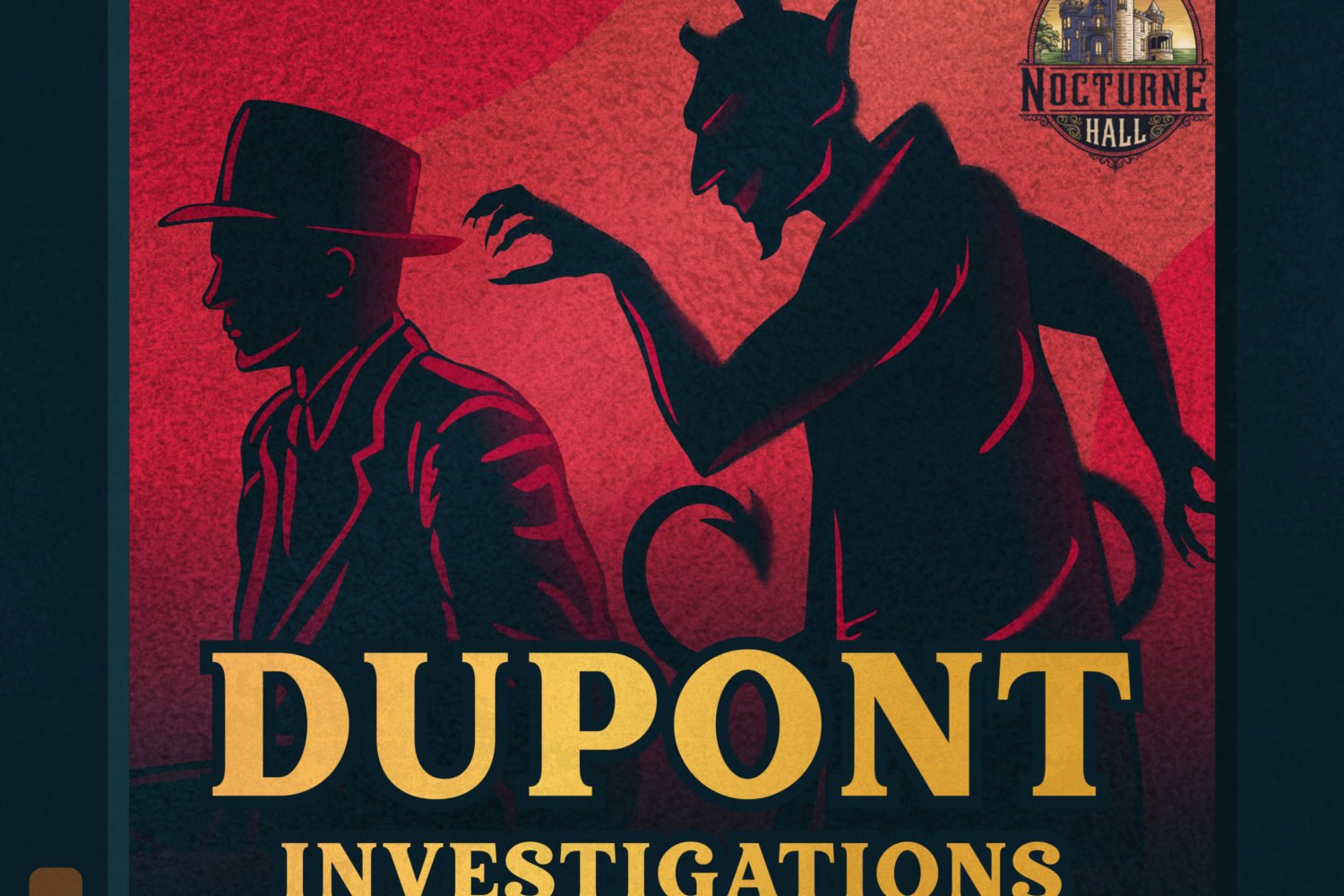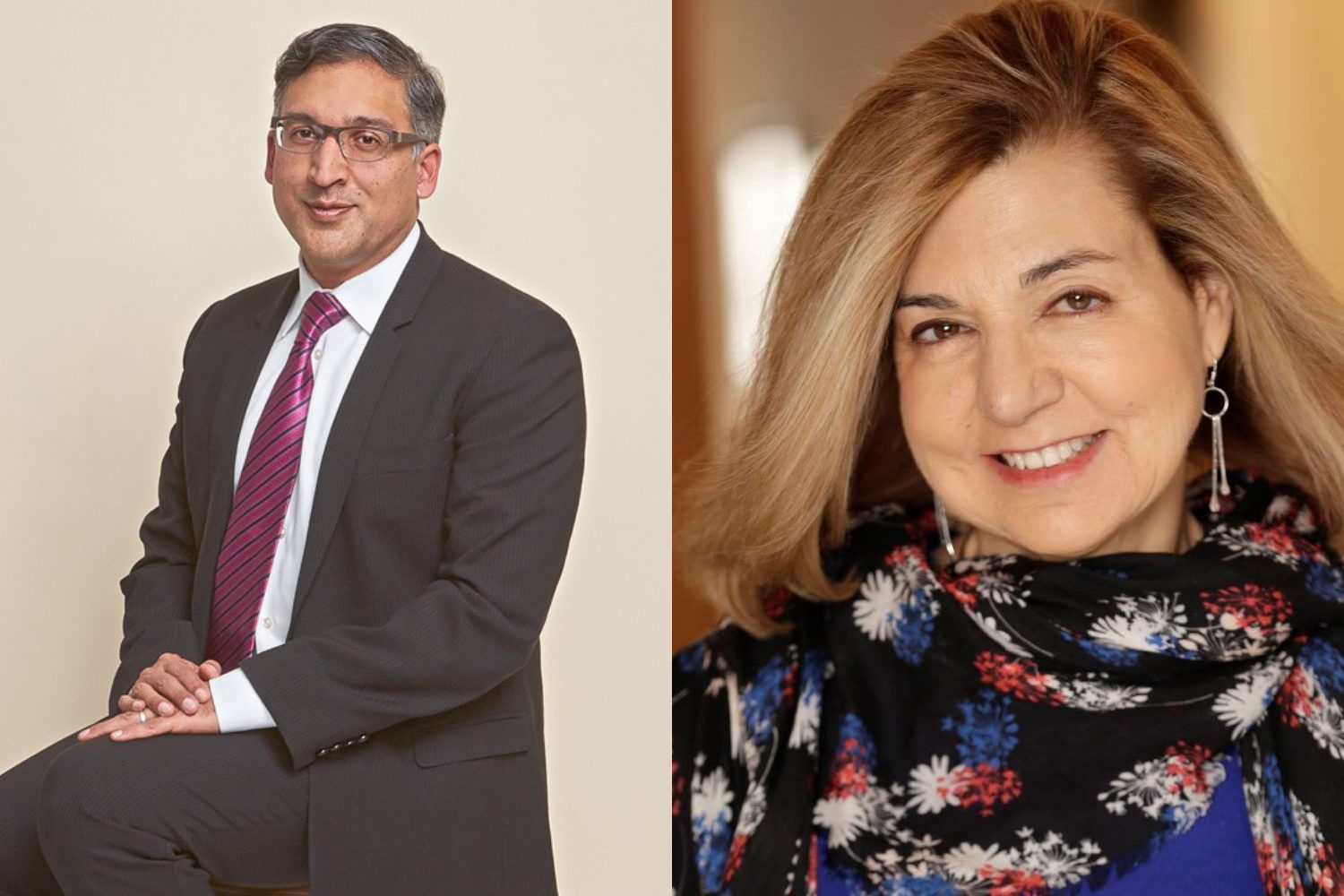In 1971 and 1972, Southeast DC was terrorized by a string of brutal murders. Six Black girls, ages 10 to 18, were kidnapped, killed, and left on the side of I-295, the Anacostia Freeway. They soon became known as the “Freeway Phantom” murders. The emotional toll on victims’ families was devastating enough. Adding to the grief: tense relations between the police and Southeast DC’s Black community, who were frustrated by a seeming lack of urgency from law enforcement that resulted in the case going cold. It has never been solved.
Longtime public radio correspondent Celeste Headlee has spent the past two years scouring boxes of evidence and interviewing community members about what may be DC’s first serial killings. With the help of Romaine Jenkins, a former DC homicide detective, who reopened the case, Headlee has been able to shed some new light on the gruesome events. Her new podcast, “Freeway Phantom,” produced by BlackBarMitzvah, explores new evidence that they hope could potentially help solve the case. The first two episodes dropped last week. We were able to talk to her about the podcast and the process:
Can you talk about how you went from debunking a 2017 viral rumor about missing Black girls to getting involved with the very real Freeway Phantom case?
Investigative reporting is like going down the rabbit hole. You’ll find a story that’s interesting, you start to research that story, and that leads you somewhere else, and then that leads you somewhere else. And eventually, it led our team to the story of the Freeway Phantom. What surprised all of us is that this guy murdered at least as many people as the Son of Sam did and very few people have ever heard of him. And that inevitably led to the question of “how is that possible?”
In the first episode of the podcast you talk about how you “like not having to cover crime.” How did you prepare yourself to cover these brutal events? And what did you learn from stepping out of your comfort zone?
Anytime you cover this kind of violence, especially with children, that’s always tough. And my hat’s off to the people who do this all the time, because it’s necessary work. But it’s tough. And it’s heartbreaking. Then take it a step further and start doing research into the psychology of a serial killer, and that takes you down an even darker place. On the other hand, this story in particular has so many resonances with the type of stories that I do cover, things like criminal justice, the relationship between law enforcement and neighborhoods, specifically between law enforcement and African Americans, that it did help to connect dots.
This case is a jumping-off point for so many major urban issues facing Southeast DC, like policing and gentrification. For readers who are unfamiliar with Southeast, how would you describe those neighborhoods that you visited?
I will say one thing—everybody is ready to say that these neighborhoods are falling apart. And it’s true, these neighborhoods are not the same as they were in the early 1970s. We visited all the neighborhoods where these girls lived. We visited the spot where they disappeared, spots [on I-295] where their bodies were left. And we noticed immediately that these aren’t ghost towns. There’s an auntie out on her front porch, fanning herself with a magazine. There was a guy outside of his house working on a car. We were noticed. And in one particular place because we were walking up and down the street, somebody asked us in a friendly way, “what are you doing?” You know, my grandparents lived in what eventually was the first middle-class Black neighborhood in Los Angeles. And it always bothered me the way that people make assumptions about any Black or Brown neighborhood, particular neighborhoods that were lower on the socioeconomic scale; they assumed these parents weren’t watchful parents. They assumed these neighborhoods weren’t connected to one another or didn’t care. They absolutely did, and newsflash—they still do.
Can you speak to the collective memory of those neighborhoods regarding the Freeway Phantom? Did people’s faces change when you mentioned it to them?
It was surprising to me how vividly people still remember that time, and we’re talking about half a century ago. It’s clear that these murders just terrified these neighborhoods. And of course, they did, right? These were beloved daughters, and they were snatched off the street in broad daylight. And it kept happening. And what I got from people retelling the stories of that time, was still this frustration that still lasts, this frustration that they couldn’t protect these girls. And law enforcement wasn’t going to help, there was nobody else to appeal to that was making it better. People could still get in touch with that fear they felt back in 1972.
What were some of the biggest takeaways for you in terms of “this was an issue back then, and this is also still an issue today?”
You read some of the police reports. These girls were very young, one of them was as young as 10 years old. And there are police asking their parents whether it’s possible they could have gone off with their boyfriends, and, in some cases, describing their attire as provocative—and [Carol Spinks] was wearing her school gym clothing! The way they treated these victims as though they were the perpetrator? I mean, that hasn’t changed a damn. Another thing is, again, the assumptions about these parents that were made by the police. All these questions about “Why were they alone?” “What were they doing out on the streets?” When, in almost every single case, the parents, or whoever was watching, sent them to get something from the grocery store literally just up the block. And another girl was coming home from her night classes. These parents were not negligent, and yet those were the assumptions that were made.
The lack of trust between these neighborhoods and law enforcement has to have hindered the investigation. We spoke with an officer with the Metropolitan Police who’s in charge of the unit that looks for missing children, and he was saying how important it is to get tips from the community. And if you’re not getting those, how are you gonna find anything? We know people saw something, one of those girls was snatched right out in front of a grocery store.
Detective Romaine Jenkins seems to serve as a link between the police and that Southeast community. Can you talk about meeting her and her impact on the project?
Romaine is core to the story because she has been for decades now driven by a need, I think, to close these cases. And she was the one that, when she was still with the Metropolitan Police, reopened the case. She was the one that went to all these different law enforcement agencies and got them to send her the evidence. So all that evidence is sitting in the boxes in her house. She still believes it’s solvable, and I agree with her. So she’s kind of a driving force behind this whole thing. And at some point I have to believe that something’s going to shake loose, or somebody’s going to be able to go through all those evidence boxes in a way that we see something that we hadn’t seen before.
The first two episodes cover some blatant malfeasance by the MPD. As the series continues what can listeners expect? Will it get worse? Is there any silver lining to this?
Look, there’s no sugarcoating the murder of at least six, probably more young, beautiful, promising Black girls. There’s no way to make that easier. But there’s plenty to at least inspire hope. There’s the dedication of people like Romaine. There’s the resilience of [the victims’] families. We also spend time with a man who works a day job while volunteering to track down missing children, and he’s been incredibly successful. So yeah, this isn’t going to just break your heart every single second. There’s definitely light in the darkness.
How does this story fit into the legacy of what was once called Chocolate City?
The thing about Washington, DC, is that the people here—that really live here, they’re not just here for a government job—love the city. But we’re not blind to the issues that face DC. It’s just that we love it anyway. And I think this story kind of demonstrates that, because there is a lot to love in this story in terms of the people themselves, who rise above and yet know that Washington, DC, will break your heart. One of the reasons why the Freeway Phantom cases didn’t get the attention they deserved, reasons besides racism and misogyny and socioeconomic inequality, was the fact that that’s when the Vietnam War protests began. Everyone got completely distracted, and that’s what happens in DC, right? The needs of the city are often subsumed by the needs of the country because this is the capital.
If you’re allowed to share, do you have a theory on this case? Who do you think the Freeway Phantom is?
We commissioned the very first scientific profile of the Freeway Phantom ever, and that profile does not match the suspect that law enforcement had in the 1970s. My suspicion is that this person, this man, is probably dead. He was probably Black, and he obviously had an issue of violence against children, and especially female children. There are a couple of inklings that I absolutely can’t talk about, but we already have gotten a tip or two from people who have heard the first couple episodes. And we totally encourage people, because someone, somebody still knows something. It hasn’t been that long, somebody knows something that can help us close these cases and bring justice and closure to these families. That’s one of the biggest purposes of this podcast, [that] we can, at some point, finally, give the families the answers that they deserve. And if nothing else, there’s a reason why the movement is to say their names, right? It’s because they deserve to be remembered. And these girls whose bodies were tossed out on the freeway like garbage, and whose murderers did not get the attention, or the serious investigation that they deserved? At least now, hopefully, we can tell their stories, and people will remember their names.
The Freeway Phantom Podcast can be found on Spotify and Apple Music. This interview has been condensed.

